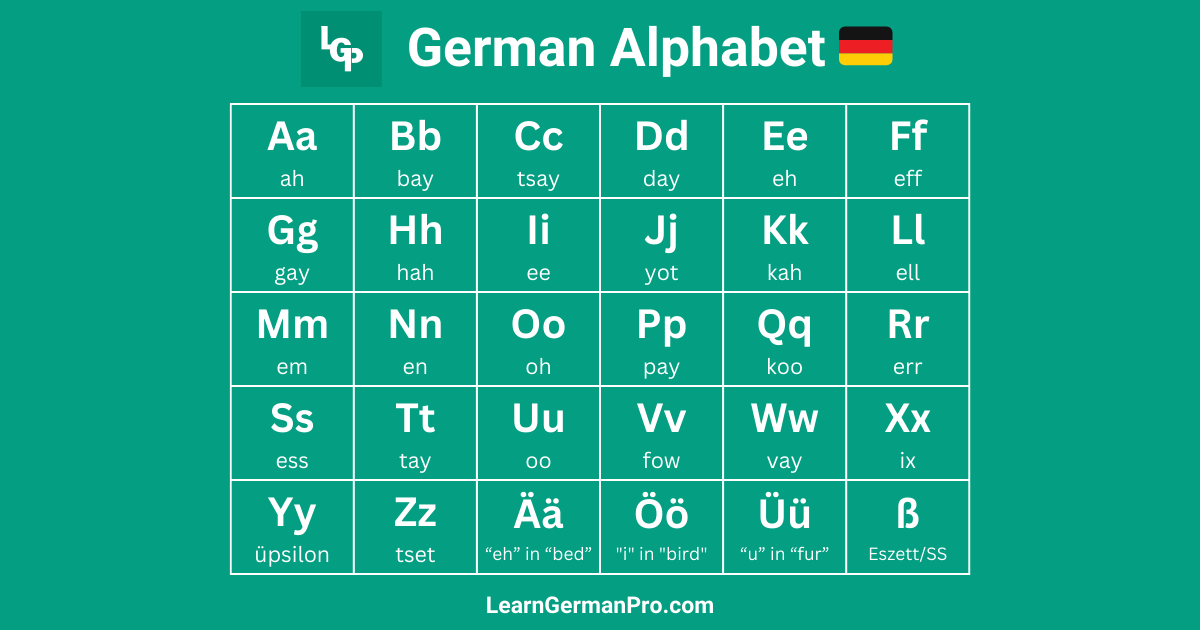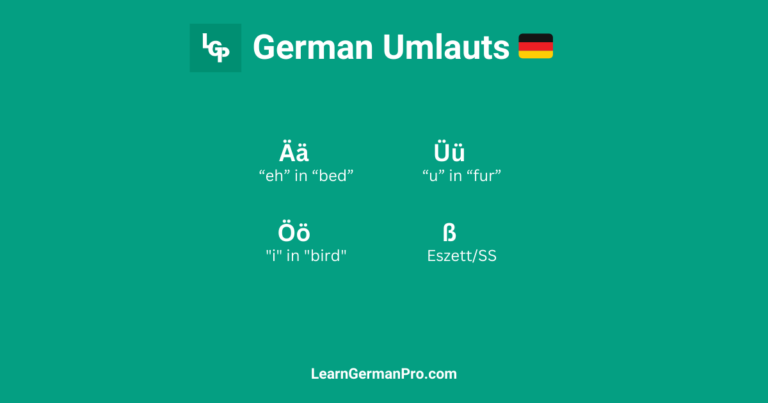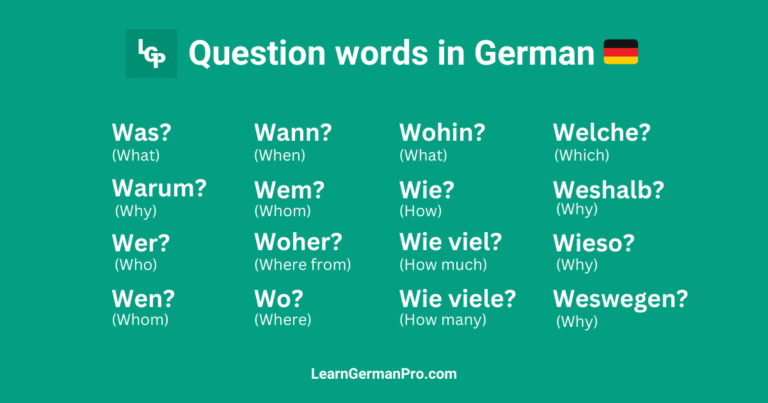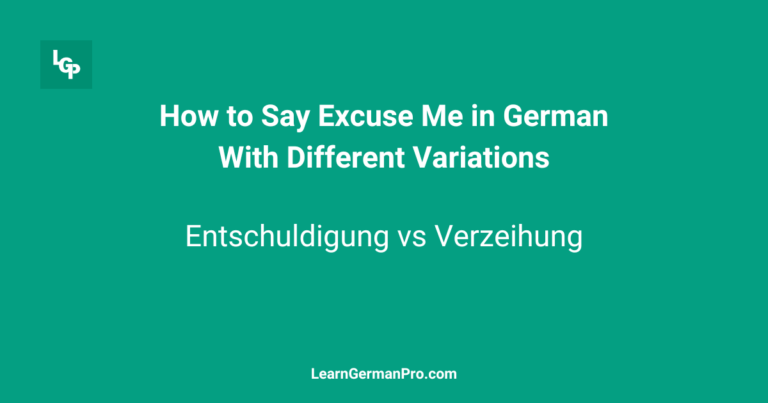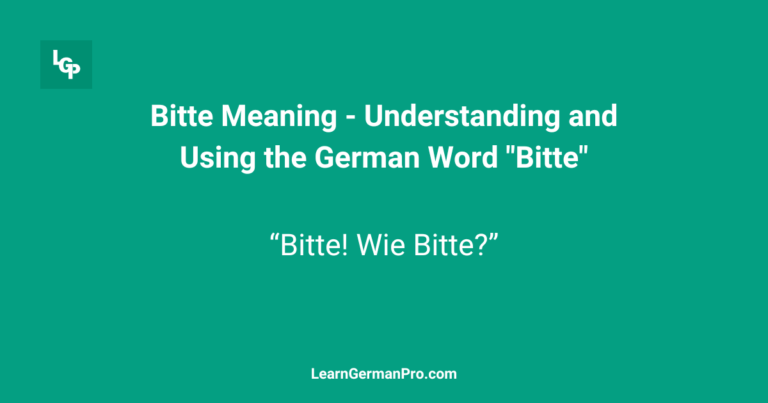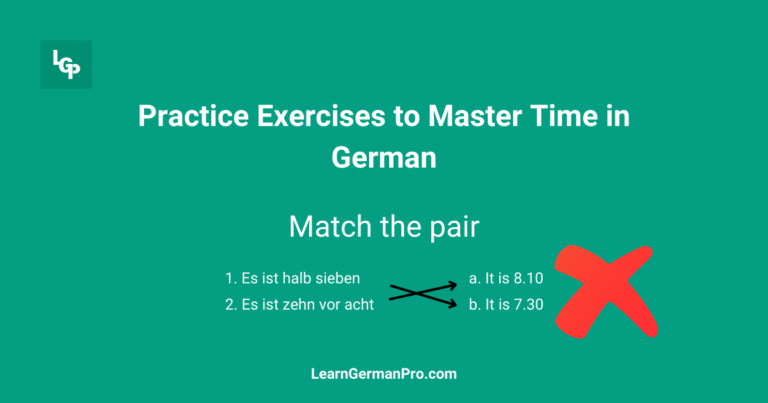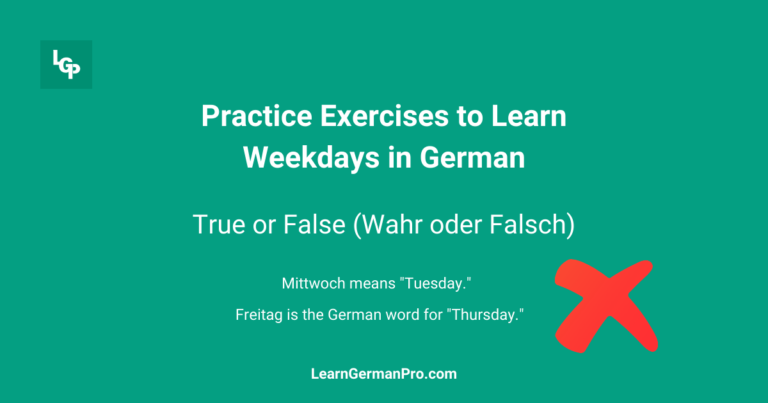German Alphabet
If you’re starting to learn German, one of the first things you’ll encounter is the German alphabet. Understanding the letters, their pronunciations, and how they differ from English is crucial to mastering the language. Whether you’re planning to visit a German-speaking country, study the language for work, or simply explore a new hobby, getting familiar with the German alphabet is your first step.

In this guide, we’ll break down the German alphabet, its pronunciation, and provide tips to help you learn it quickly and effectively.
What Is the German Alphabet?
The German alphabet consists of 26 standard letters, just like the English alphabet, but it also includes a few additional characters that give it its unique flair. These extra characters include the Umlauts (ä, ö, ü) and the Eszett (ß).
Here’s a breakdown of the German alphabet:
| Letter | Pronunciation |
|---|---|
| A | ah |
| B | bay |
| C | tsay |
| D | day |
| E | eh |
| F | eff |
| G | gay |
| H | hah |
| I | ee |
| J | yot |
| K | kah |
| L | ell |
| M | em |
| N | en |
| O | oh |
| P | pay |
| Q | koo |
| R | err |
| S | ess |
| T | tay |
| U | oo |
| V | fow |
| W | vay |
| X | ix |
| Y | üpsilon |
| Z | tset |
The Umlauts: Ä, Ö, Ü
The German language has three special characters known as Umlauts. These are modifications of the vowels a, o, and u, and they play a crucial role in pronunciation and meaning.
- Ä (pronounced like “eh” in “bed”)
Example: Mädchen (girl) - Ö (pronounced like “i” in “bird”)
Example: Hören (to hear) - Ü (pronounced like “u” in “fur”)
Example: Müde (tired)
Umlauts are not just decorations on letters; they can change the meaning of a word entirely. For example, “schon” means “already,” while “schön” means “beautiful.”
The Eszett (ß)
The Eszett, also known as the sharp S or “ß”, is another unique character in the German alphabet. It represents a double “s” sound and is used in specific contexts.
- Example: Straße (street)
Pronounced like “shtrah-seh.”
One thing to note is that the Eszett is only used in lowercase. When a word with an Eszett is capitalized, it changes to “SS.”
How to Pronounce German Letters
The pronunciation of German letters can be different from English, especially when it comes to vowels. Here are a few key points to keep in mind:
- Vowel Sounds:
- A is pronounced “ah,” as in “father.”
- E can sound like “eh,” as in “bed,” or “ay,” as in “say.”
- I is pronounced “ee,” as in “see.”
- O sounds like “oh,” as in “more.”
- U is pronounced “oo,” as in “moon.”
- Consonant Variations:
- V is pronounced like an “f,” so “Vater” (father) sounds like “fah-ter.”
- W sounds like “v,” so “Wasser” (water) is “vah-ser.”
- S at the start of a word before a vowel is pronounced like a “z,” as in “Sonne” (sun), which sounds like “zonn-uh.”
- Z is pronounced “ts,” so “Zeit” (time) sounds like “tsite.”
- Tricky Sounds:
- R is often rolled or pronounced at the back of the throat, especially in southern German dialects.
- J is pronounced like the English “y,” so “Jahr” (year) sounds like “yar.”
Tips for Learning the German Alphabet
- Practice Regularly: Repetition is key. Spend a few minutes each day practicing the alphabet, focusing on both the letters and their sounds.
- Use Flashcards: Create flashcards with the letter on one side and its pronunciation and example words on the other. This can help reinforce your memory.
- Listen and Repeat: Watch videos or listen to recordings of native German speakers pronouncing the alphabet. Repeat after them to get a feel for the sounds.
- Write It Down: Writing out the alphabet while saying the letters aloud can help solidify your understanding.
- Learn with Words: Try to learn the alphabet through words. For example, associate “A” with “Apfel” (apple) or “B” with “Brot” (bread). This helps you connect letters with actual language usage.
Why Learning the German Alphabet Matters
Understanding the German alphabet is more than just memorizing letters. It’s the foundation for everything else you’ll learn in the language. From reading road signs in Germany to pronouncing someone’s name correctly, the alphabet is your starting point.
Moreover, mastering the alphabet will improve your pronunciation and make it easier to learn new vocabulary, read German texts, and engage in conversations with native speakers. It’s a small step that will have a big impact on your overall language proficiency.
Conclusion
The German alphabet might seem intimidating at first, especially with its unique characters like Umlauts and the Eszett. However, with regular practice and a few helpful strategies, you’ll find that it’s not as difficult as it seems. By mastering these basics, you’re setting yourself up for success in your German language journey.
So grab your flashcards, start practicing, and soon enough, the German alphabet will become second nature to you. Viel Erfolg beim Lernen! (Good luck with your learning!)

